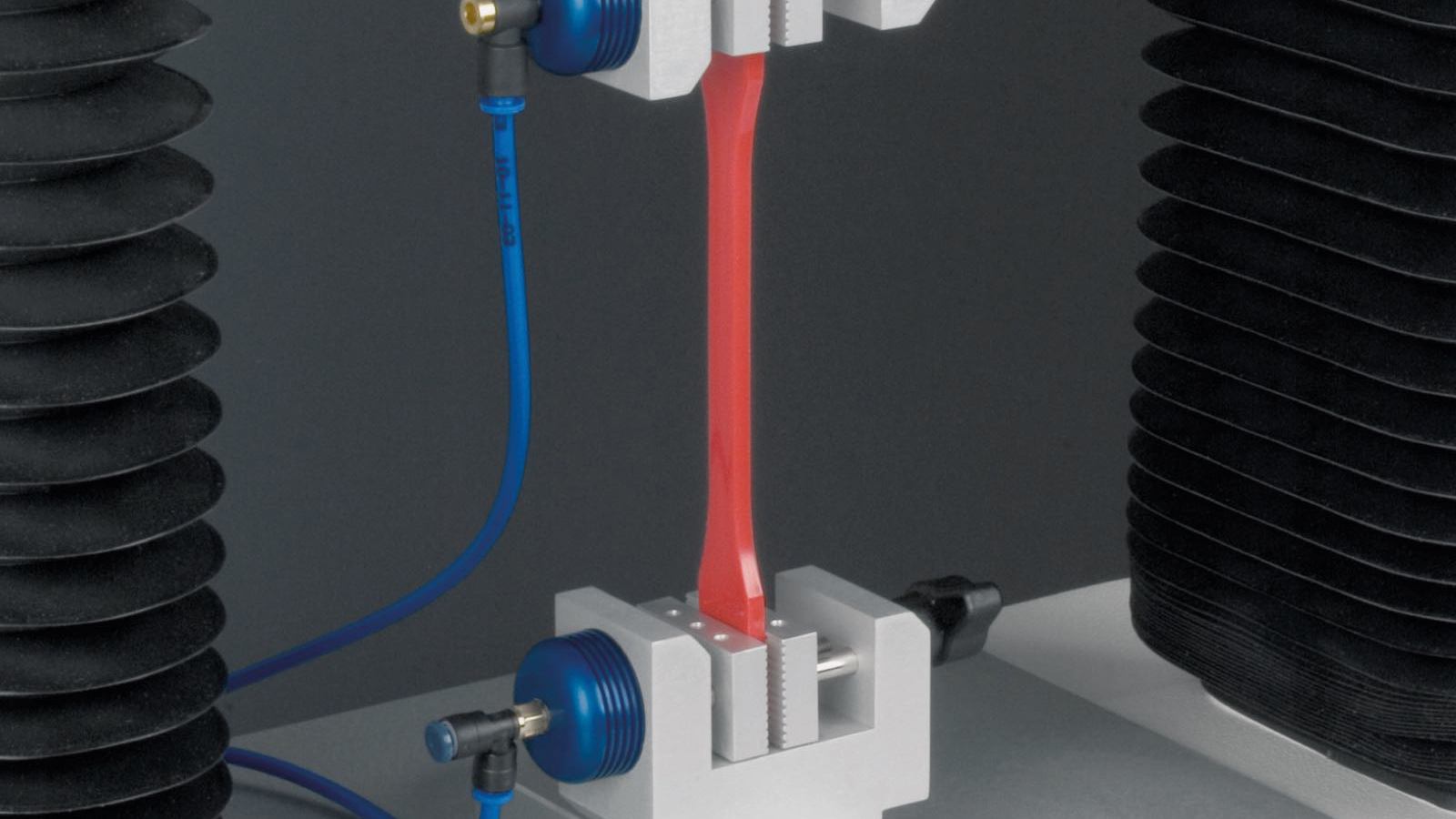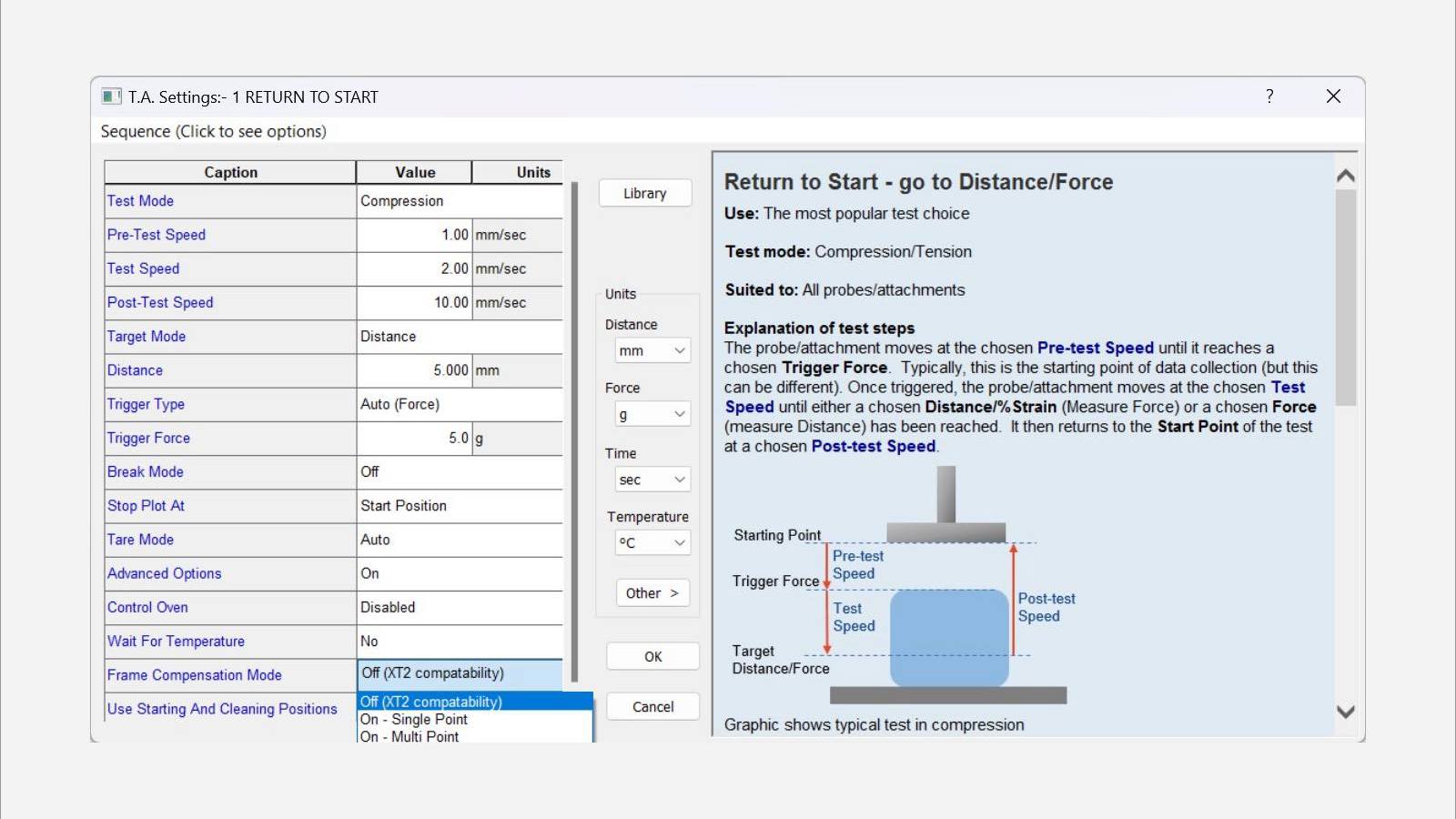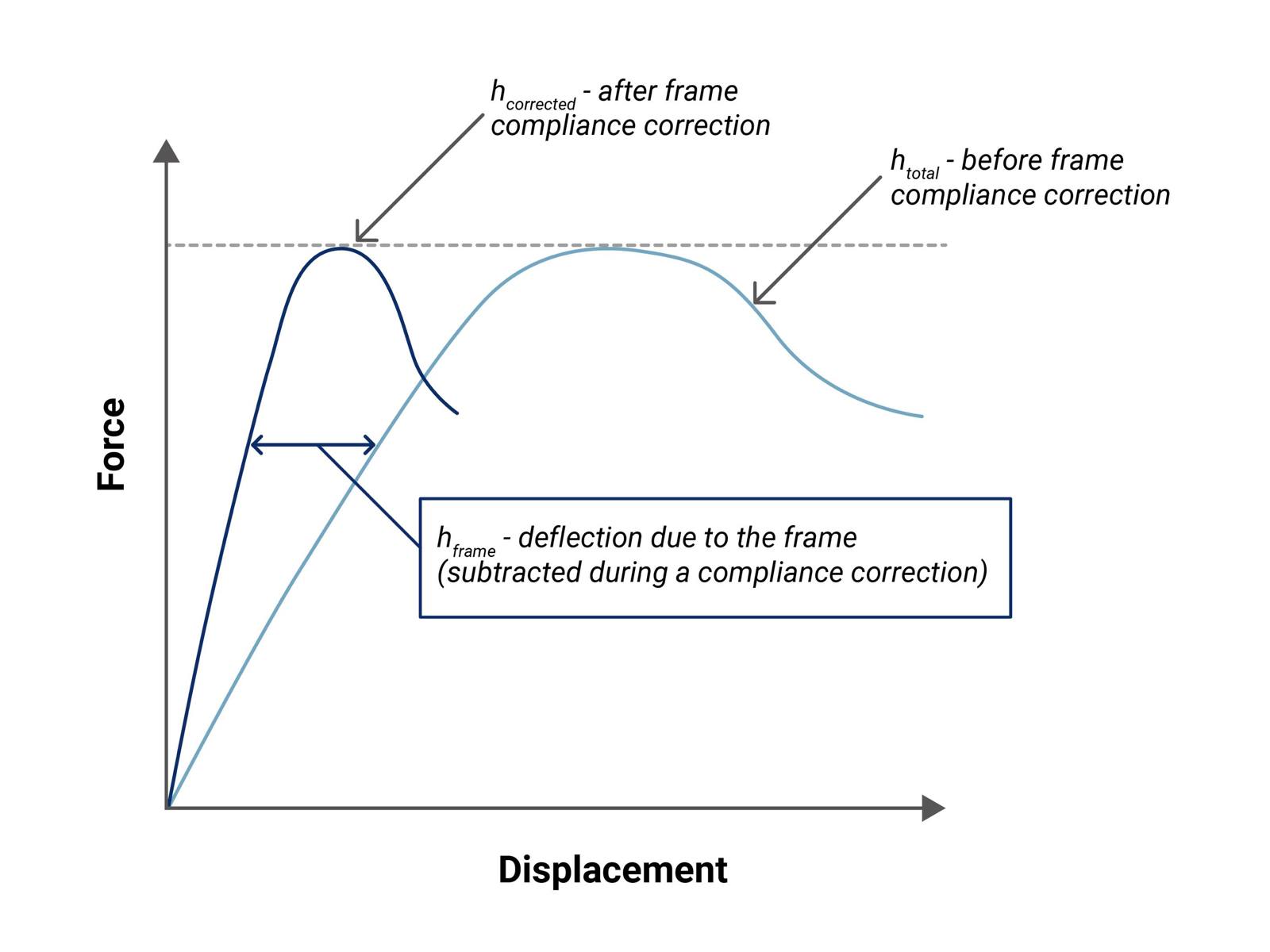
Understanding how a Texture Analyser works – frame deflection

When any Texture Analyser/Materials Testing machine is subjected to a force, the whole system experiences some degree of deflection, including the frame, Load Cell, probe or grips, couplings, and the sample undergoing measurement.
Steps are taken to reduce this movement as far as possible within the bounds of budget and weight. Reinforcement methods include low flexure structures used in castings (corrugation in extrusions, reinforcement bars or reduced length of cantilever components), linear rails used to prevent torsion, careful choice and installation of Load Cell, and appropriately tightened internal bolts.
Most Texture Analysers are of the single column type, but a twin column model, TA.HDplusC, is also available, which measures forces to 750kg. The use of two columns significantly reduces frame compliance and expands the available load capacity. This type of instrument comes at higher cost and is bulkier, so is generally only used when the enhanced capacity is required but is a popular choice for univeristies and scientific institutes where the future testing requirements are uncertain thereby requiring a more flexible instrument. Food texture applications generally only require the stiffness and capacity of a single column model, and so this is the setup of choice for most food-specific researchers.
Frame deflection compensation
Deflection is proportional to the load applied through the instrument arm. The Texture Analyser software measures displacement, and this displacement is the sum of the total system deformation. To determine the displacement of the specimen only, machine compliance (deformations associated with the load frame, Load Cell, and grips) must be removed from this measurement. Frame deflection is specific to each system and is dependent on the forces subjected to a given system.
While this deflection is relatively minor, some operators or applications requiring higher forces may need to correct for it. There is the means to compensate for frame deflection using methods including:
- Single-point correction – uses a calculated force-displacement bend gradient. Non-linearities are not removed but this is still an improvement
- Multi-point bend correction – several thousand points of force-bend data plotted across an appropriate force range. This method accounts for any non-linearity that may be present with particular probe configurations, but to maintain accuracy, must be calibrated more frequently.

 A schematic representation of a force-displacement graph before and after frame deflection compensation
A schematic representation of a force-displacement graph before and after frame deflection compensation
Applications where Frame Deflection Compensation might need consideration
Frame deflection compensation is most important in applications that require a high force and the measurement of low deflection, such as in the fracture of powder compacts. In this application, small movements are measured while the Texture Analyser compresses a rigid sample. The deflection/compliance of the Texture Analyser is significant compared to the movement of the tablet, and so must be removed. The same applies to ‘squeeze flow’ tests, during which a thin layer of liquid is compressed between parallel plates. However, this is not the case for most food applications. Food samples are generally compliant themselves, and require smaller forces for their measurement. Consequently, frame compliance correction is not generally carried out when food testing.
How Frame Deflection Compensation is calculated
For each value of applied force, the corrected displacement is equal to the frame displacement (measured during a frame correction) subtracted from the total displacement measured by the Load Cell:
h_corrected = h_total-h_frame
h_corrected = corrected displacement
h_total = total displacement measured by the Load Cell
h_frame = frame displacement measured during the frame compliance correction procedure
Each of these values is a function of the force applied through the loading arm – the higher the force, the greater the deflection of both the frame and sample. All of these displacements are generally measured in mm. For applications in which it is necessary, frame compliance compensation is carried out in tension as well as compression.
Request a Quick test setup guide poster for placement near your instrument to inform users.
Or if you have lost it, request a comprehensive manual to be emailed to you.














